Garden Pests – Green Protect Insect Traps
The range of Green Protect insect traps work by enticing garden pests using the science of attraction. The attraction is either visible, by aroma, or pheromone derived. The traps work to attract and trap the intended pest. Sticky traps work to alert you to the presence of potential infestations, so you can take the required action.
Click the following link to download your handy Pest Guide. The guide aims to help you identify potential pest problems in your home and around your garden.
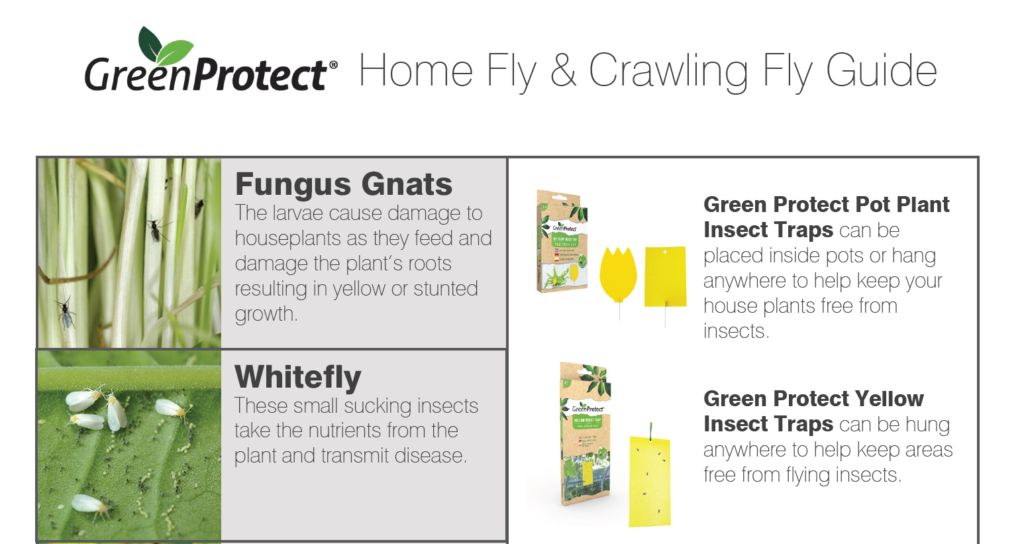
The following article covers some available garden pest “attract and trap” products. These traps will help you improve the quality of your garden’s fruits, your home flowers and the time you spend in your garden.
About Garden Pests – Wasps
Wasps primarily become a nuisance during the summer and autumn months. They often cause fear due to their ability to repeatedly sting.
Wasps are identified by their distinctive yellow and black markings across their abdomens and range between 1 – 3 cm in size. They are distinguished from bees as having a thin waist. They are also more aggressively coloured.
While bees feed on pollen and nectar, wasps feed on other insects and human food stuffs, which is when they become a garden pest nuisance.
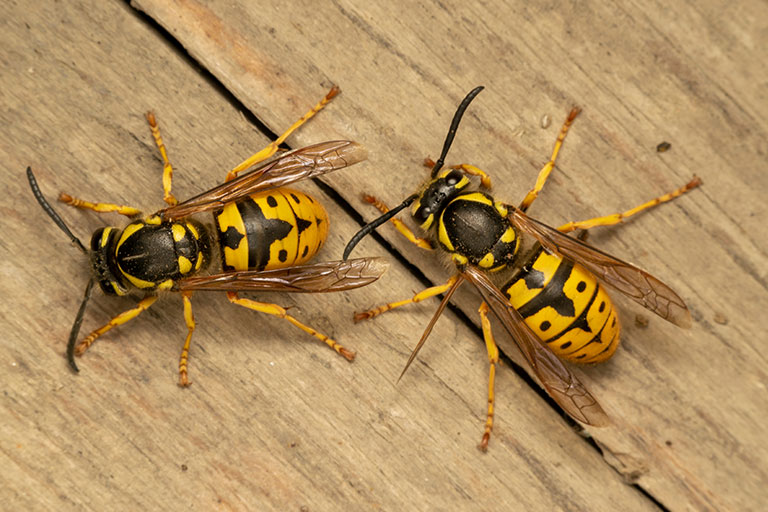
Preventing Wasps In Your Home & Garden
To protect against garden pets, like wasps, use a Green Protect Wasp and Flying Insect Trap to alert you to their presence. If you find you’re catching lots of wasps in your Green Protect wasp trap, you may have a wasp nest close by, and need to implement preventative measures. To prevent wasps from being a garden pest in or near your home, use these simple, eco-friendly methods:
- Clean any problem areas and continue to keep your home as clean as possible.
- Remove food sources, and ensure that liquids and food are removed from the area of detection and cover food in open areas.
- Empty waste daily and clean up any spilt liquids and food.
- Contact a professional pest controller to remove any nests.
About Garden Pests – Whitefly
Whitefly are a common garden pest. They are identified as having a white, wax-like, powder layer on top of their body and measure around 2 mm in size. They can be found on a range of different plants and if you touch the plant, they suddenly disperse. Both flies and the nymphs (larvae/young whitefly) can be found underneath the leaves of affected plants. These small sucking insects take the nutrients from the plant and transmit disease. In the worst cases, infestations can result in the plant drying out and losing its leaves.
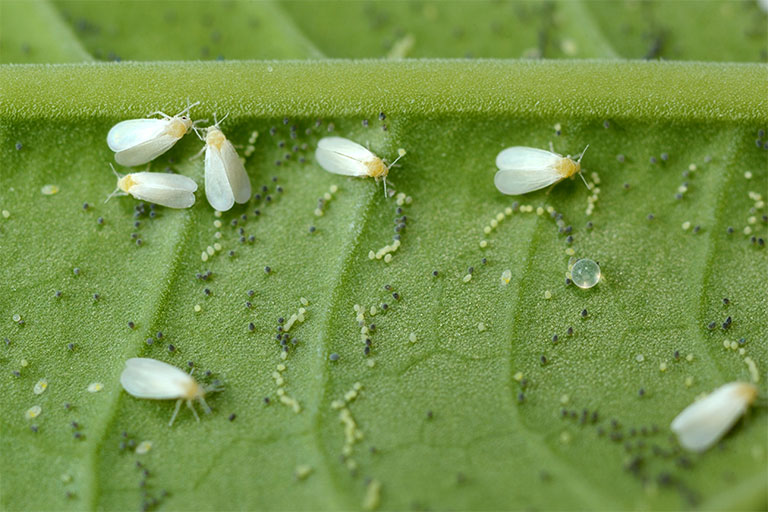
The whitefly and its nymphs can become a real garden pest problem. They secrete honeydew, making the leaves of the plant sticky. In bad cases, this honeydew can cover the plant in black mould.
It is possible for a female whitefly to lay 200-400 eggs each season, which begins in late Spring. Whitefly are notorious for building up a resistance to synthetic chemical pesticides, often making eco-friendly solutions the most effective solution.
How To Control Whitefly
Use Green Protect Pot Plant Insect Traps to detect the presence of this garden pest, that feeds on your plants. If you find you’re catching lots of problem garden pest insects, you may need to implement measures to remove them.
To remove whitefly from your home or garden you can use the below simple, eco-friendly methods:
- Use a small hand vacuum to remove pests from under the leaves.
- Remove the extremely infected branches or leaves using sharp bypass secateurs or garden hedge shears.
- Use a pressure sprayer to apply a soap / water solution to your plant.
- Position a Green Protect Pot Plant Insect Trap in all potted plants.
Garden tip: The Hozelock Pure Pressure Sprayer kit allows you to control garden pests using chemically-free, natural products and homemade solutions, without the risk of damage or corrosion.
About Garden Pests – Aphids
Garden pests, like Aphids, appear in different colours, including yellow, green, black, grey and white, or pink and brown. They’re around 2 mm in size and can be found on indoor and outdoor plants.
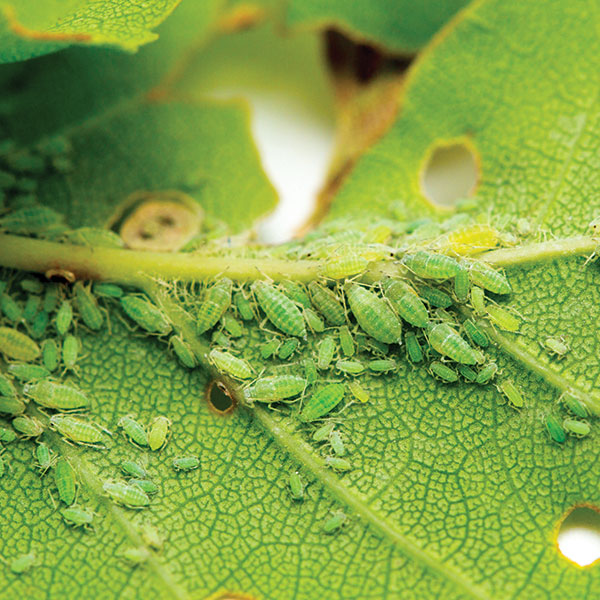
Aphids are a garden pest that cause problems to your plants as they feed on sap, sucking it from the leaves, causing them to wither. Like Whitefly, Aphids secrete honeydew, which makes the leaves of the plant sticky. The honeydew has the potential to appear as black mould on your plant.
Garden tip: A tell-tale sign you have the Aphids, is the presence of large numbers of ants. Ants farm aphids for their honey dew and use it to feed their developing colonies. You’ll notice streams of ants marching up and down the stems of affected plants.
Aphids are often found on new, young plants, with new leaves or flowers growing. New growth has higher levels of useful nutrients. Aphids are are a source of disease transmission and so considered garden pests as they. Aphids can cause serious damage as they make the plant’s leaves turn yellow and curl and stunt growth.
How To Control Aphids
Use Green Protect Pot Plant Insect Traps to detect the presence of garden pests. If you find you’re catching lots of problem pest insects, you may need to implement measures to remove them. Once you detect aphids, they are rarely on their own. When you notice them, it’s time to take action before they become a real issue.
To remove Aphids from your plants you can use the below simple, eco-friendly methods:
- Wearing gloves, remove the Aphids by hand and dispatch between your fingers.
- Take your plant(s) outside and use a garden hose to spray infected plants with water. Avoid using a pressure high enough to damage the plant.
- Use a small hand vacuum to remove pests from under the leaves.
- Remove the extremely infected branches or leaves using sharp bypass secateurs or garden hedge shears.
- Use a pressure sprayer to apply a soap / water solution to your plant.
- Position a Green Protect Pot Plant Insect Trap in all potted plants.
About Garden Pests – Codling Moths & Plum Moths (Fruit Trees)
Codling moths and Plum moths both lay their eggs within the flower buds of their target fruit tree species. Codling moths favour apple and pear tree’s and Plum moths prefer plum trees.
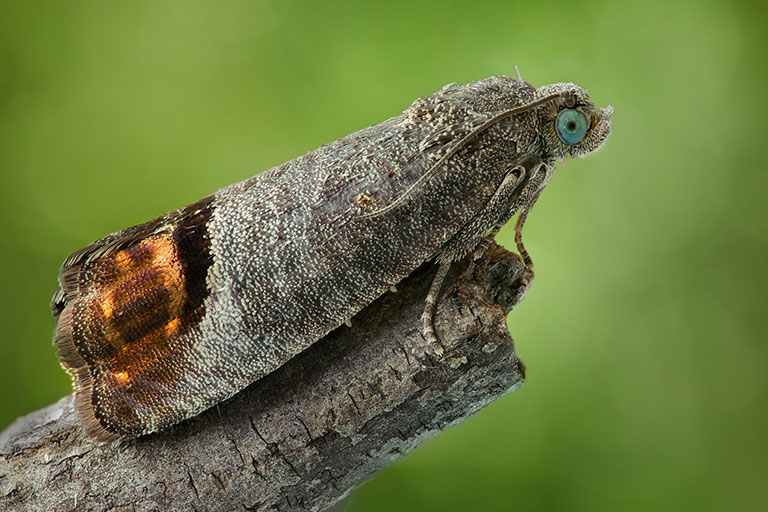
Both moths feed on nectar and breed early in the spring months. Shortly after their selected trees flower, the moths lay their eggs on the tree’s leaves and within open flowers. The eggs hatch after 8-14 days and the larvae emerge.
The larvae of these garden pests live protected inside the developing fruit. Here they feed on the fruit’s flesh and core. As the larvae eat the infested fruit, they fill it with excrement, which in turn causes the fruit to slowly rot.
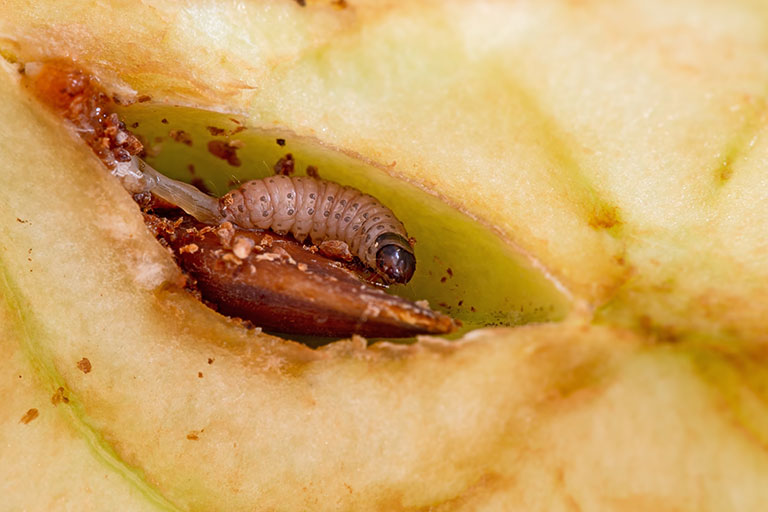
The larvae take around 4 weeks to fully develop, after which they go on to seek out an appropriate place to over-winter.
You can’t control any Larvae already present inside your fruits. You can, however, control future infestations by taking preventative measures. And, this needs a careful long-term approach through the entire season.
How To Prevent Moths in Apple, Pear and Plum Trees
Use Green Protect Codling moth traps or Green Protect Plum moth traps to detect the presence of problem moths. To prevent future infestations, implement some or all of the following measures:
- Remove fruits from the ground. Put the fruit in the garden waste bin, rather than composting, this helps avoid the pest returning next year.
- After removing the fruit from the ground, use a Kent and Stowe Border Fork to till the soil under the tree (dig, stir, or overturn.)
- Ensure you have a Green Protect Codling/Plum Moth Trap positioned in and around your fruit tree(s) all summer to increase monitoring opportunities.
- Hanging the throughout the summer allows you to monitor for problem moths and take action as soon as the problem arises.
If you want to improve the quality of your plants, flowers, fruits, and vegetables, check out the full range of Green Protect insect traps and deterrents. Identifying issues early on is key to your success and prevents small issues ruining your whole crop or the look of your favourite houseplants.




